Phil X: “Jon Bon Jovi called, and he said, ‘Hey. We need you’”
The session supremo on his signature Friedman and joining 'Jovi
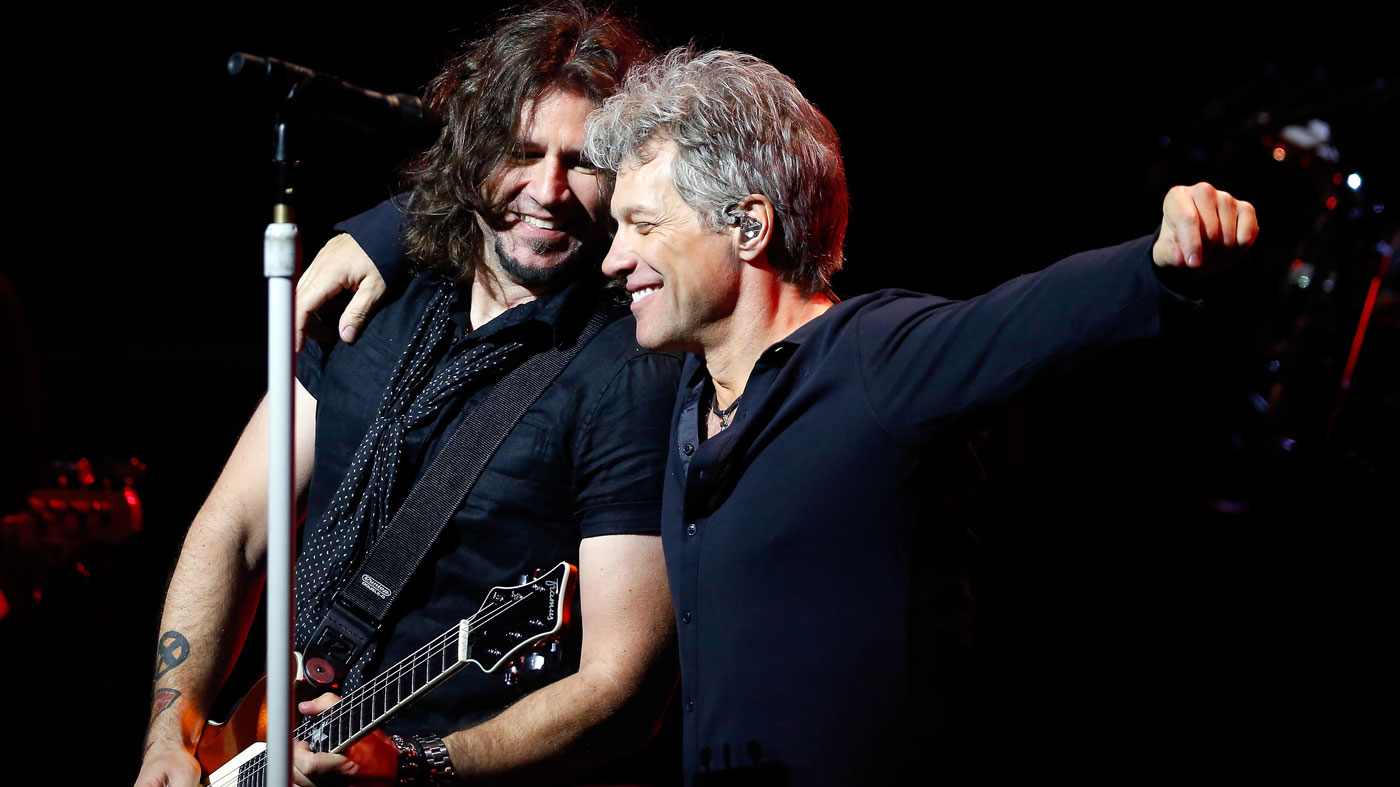
Seemingly unstoppable, Phil X has gone from LA session man and YouTube star, to filling Richie Sambora’s sizeable snakeskin shoes in Bon Jovi. With a searing new Friedman amp to show off, we join him to talk tone and why you have to ‘own the lick’.
Little did he suspect that his flamboyant online riffage would win him one of the biggest gigs in rock as guitarist with Bon Jovi
Phil X sure does get around. As well as delivering venom-tipped rock guitar work on hundreds of LA sessions for artists as diverse as Kelly Clarkson and Rob Zombie, Phil also provided essential viewing for many a guitarist on the Fretted Americana YouTube show, where he demonstrated a stunning variety of rare vintage guitars by playing them within an inch of their lives - wisecracking and riffing his way through nitro-clad arcana, such as ’54 Strats and Light Show Rickenbackers.
Little did he suspect that his flamboyant online riffage would win him one of the biggest gigs in rock as guitarist with Bon Jovi.
We caught up with Phil to hear his roadtested advice on how to learn tricky parts of difficult songs fast, discuss his prototype drive pedals and new Friedman amp, and the secret to getting dirty but girthy rock tones by careful EQ and gain tweaking…
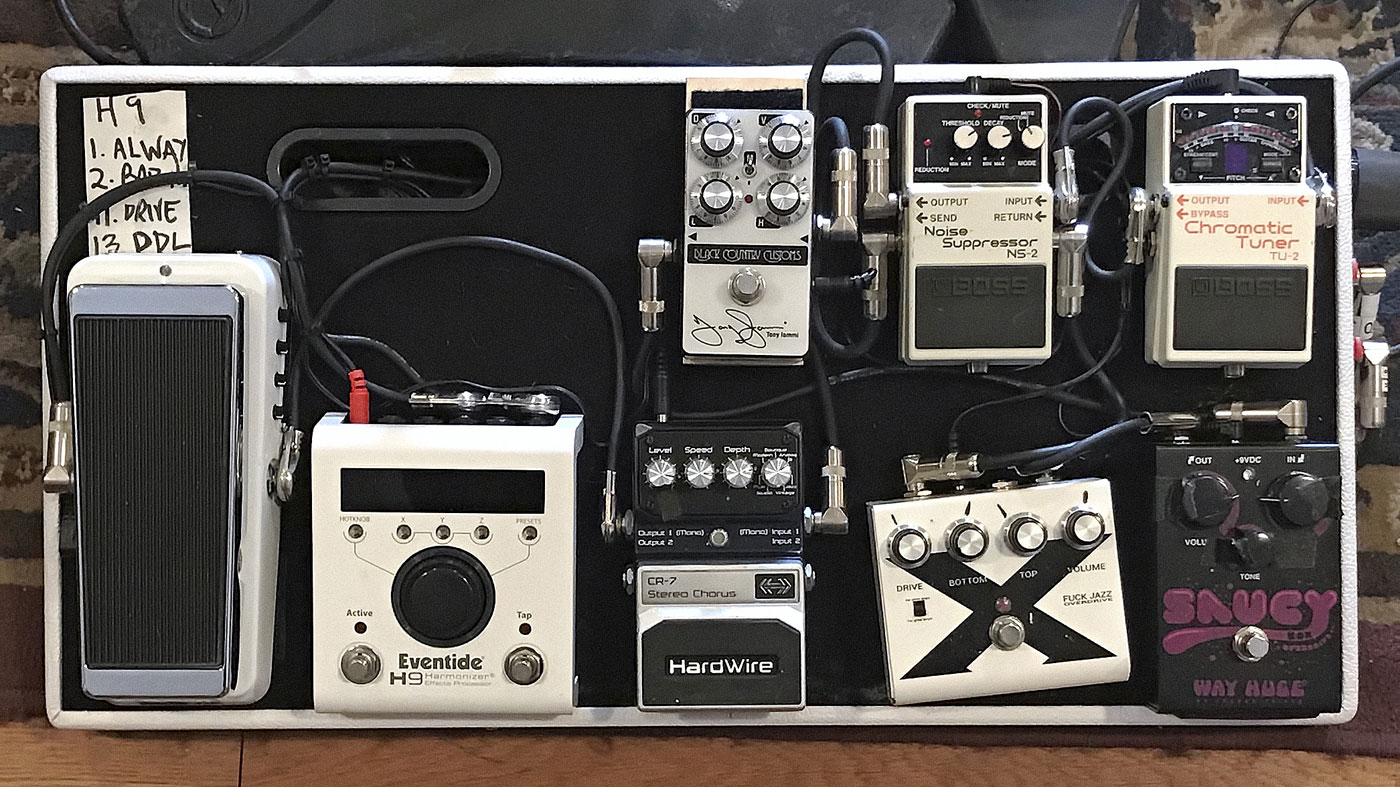
You’ve long been a vintage Marshall fan, but you have a new signature Friedman out. Why did you make the switch?
“I did it because I met Dave Friedman, and Dave’s a genius. You know how you read a magazine? He looks at the inside of an amp like you and I would read a book, do you know what I mean? So, he just knows.
“I played the BE-100, which is a very popular Friedman amp, and I was completely blown away. He let me take one to rehearsal and I plugged in and I turned up and started playing. I’m like, ‘I think this is the best amp I’ve ever played’, seriously, because it responded to my hands. It had this thing where it sounded angry when I picked hard, and it sounded less angry when I picked light, and when I turned down, it cleaned up.
Get the MusicRadar Newsletter
Want all the hottest music and gear news, reviews, deals, features and more, direct to your inbox? Sign up here.
I’m like, ‘I think this is the best amp I’ve ever played’, seriously, because it responded to my hands
“I was like, ‘Okay, it’s like he made this amp for me’. But I have a specific thing that I like when it comes to classic stuff, like Jimmy Page and AC/DC. I like less gain, and I just found with the Brown Eye, when I turned down the gain to get that, a lot of what was special about the amp went away as well.
“At the same time, Dave called me and said, ‘I want to do an amp with you, so if you could take the BE-100 and what would you do to it if you could do anything?’ Then, I told him about the gain knob, and he goes, ‘Well, I could make you a gain cut, and it would be a different circuit’, and I’m like, ‘Well, let’s do that’.
“So, he put a gain cut in a head and he sent it to me and it was close, but it sounded a little muffled. It sounded like he had switched the gain off, and it didn’t sound open enough for me. And he goes, ‘Oh, that’s easy, but I need you to come in.’
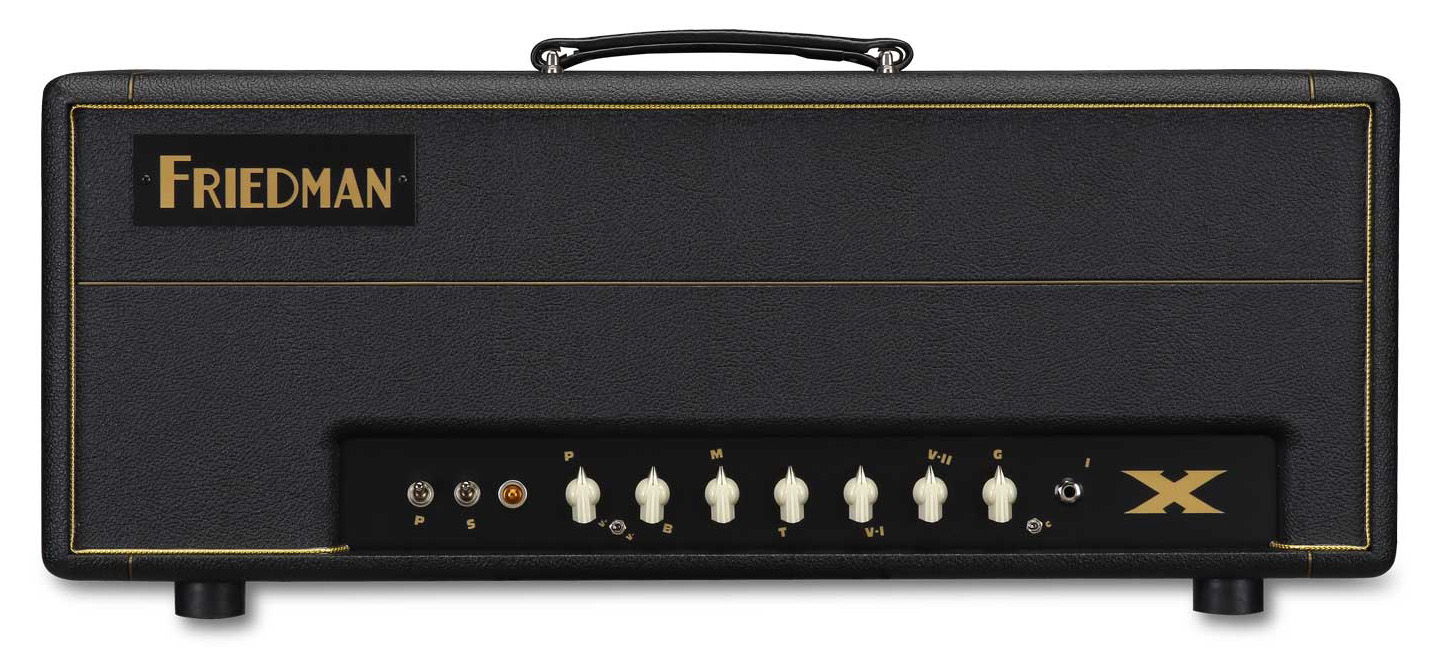
“So now, it’s Christmas. You’re in Dave Friedman’s little shop and you’ve got your guitar, and he’s got the chassis out, the solder iron, components and the cabinet. I’m playing an E chord, playing some licks, and he goes, ‘Okay, what about this?’ and he does something, and I’m like, ‘Hey, that’s all right, but it sounds a little brittle.’ And he goes, ‘Well, try the same value but, like ceramic’, and I’m like, ‘Dude, I don’t know what you’re talking about’.
“So, he did a couple of different things, and I remember the moment. He goes, ‘Hey, I’ve got an idea,’ and he took an alligator clip and he put it from one point to another point, and I hit an E chord, and it was angels singing. It was the shit and I said, ‘Dude, that’s it’. He goes, ‘Done, we’re done’. He wrote it down, sent it to the builder, and I had a head.”
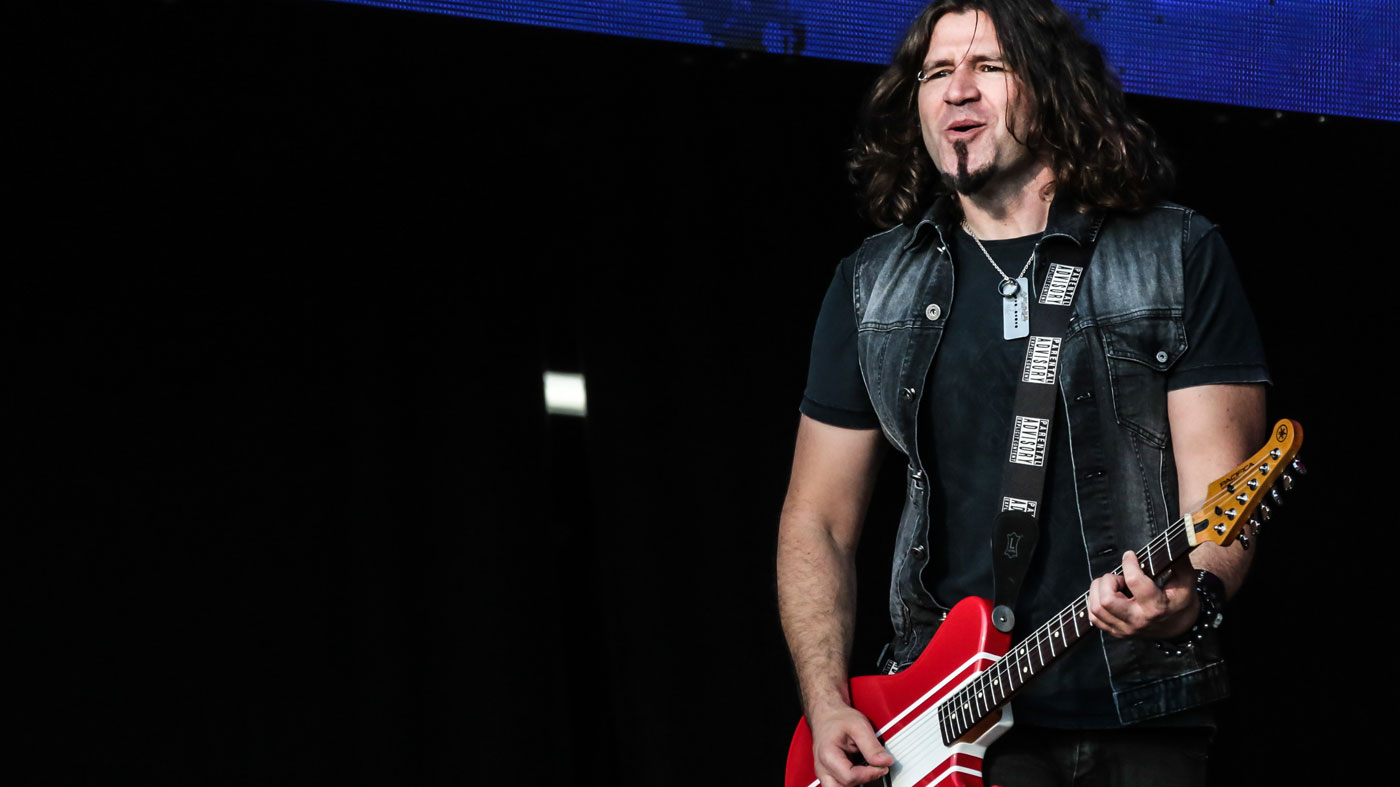
And is that available now?
“Yes, it’s the Friedman X. I have two of those in my rack with Bon Jovi. I also blend it with a ’76 Marshall JMP 100-watt head. So I’d use that, and it’s funny, because I’m not a big pedal guy. What I use with [my own band] The Drills is one or two overdrives, and that’s just for different flavours. What I use for Bon Jovi is one or two different overdrives, a delay for this, the talk box for Livin’ On A Prayer, a wah for the solo, a chorus for that thing... so I got a little more elaborate stuff going on.
“But my overdrives - and people hate me for this - they’re both prototypes. I went through 25 from when we started rehearsing to when we started doing the shows. There was one that I always came back to and that was a prototype from LAA Custom in Italy. Carlo is just a great dude. He had a great overdrive, and I go, ‘How about an overdrive, but instead of the tone control, I want treble and bass controls too’, and he sent me that, and I was, like, ‘What the fuck? This is awesome.’
“And then the Saucy Box from Way Huge pedals, I was talking to Jeorge Tripps and I said, ‘Dude, I love the Saucy Box, but I wish it was a little more open when I turned up the output’, and he did something to the Saucy Box, sent me one and I go, ‘Dude, I need another one.’ He goes, ‘I’ve got to look at my notes, I don’t know what I did.’
“So, the two overdrive pedals that I’m using with Bon Jovi are those two that nobody can buy right now. And everybody’s after them. The prototype is going to stay on the Bon Jovi ’board, but since I have number one of the production model, of the LAA Custom - it’s called the ‘Fuck Jazz’ overdrive pedal.
“And that’s it. My amp is set ready to rock, and then two little things. You know, if I want Van Halen I press this one, and if I need an AC/DC lick I put that in, just to make it get a little more out of the amp. You know, push the front end. That’s cool, man.”
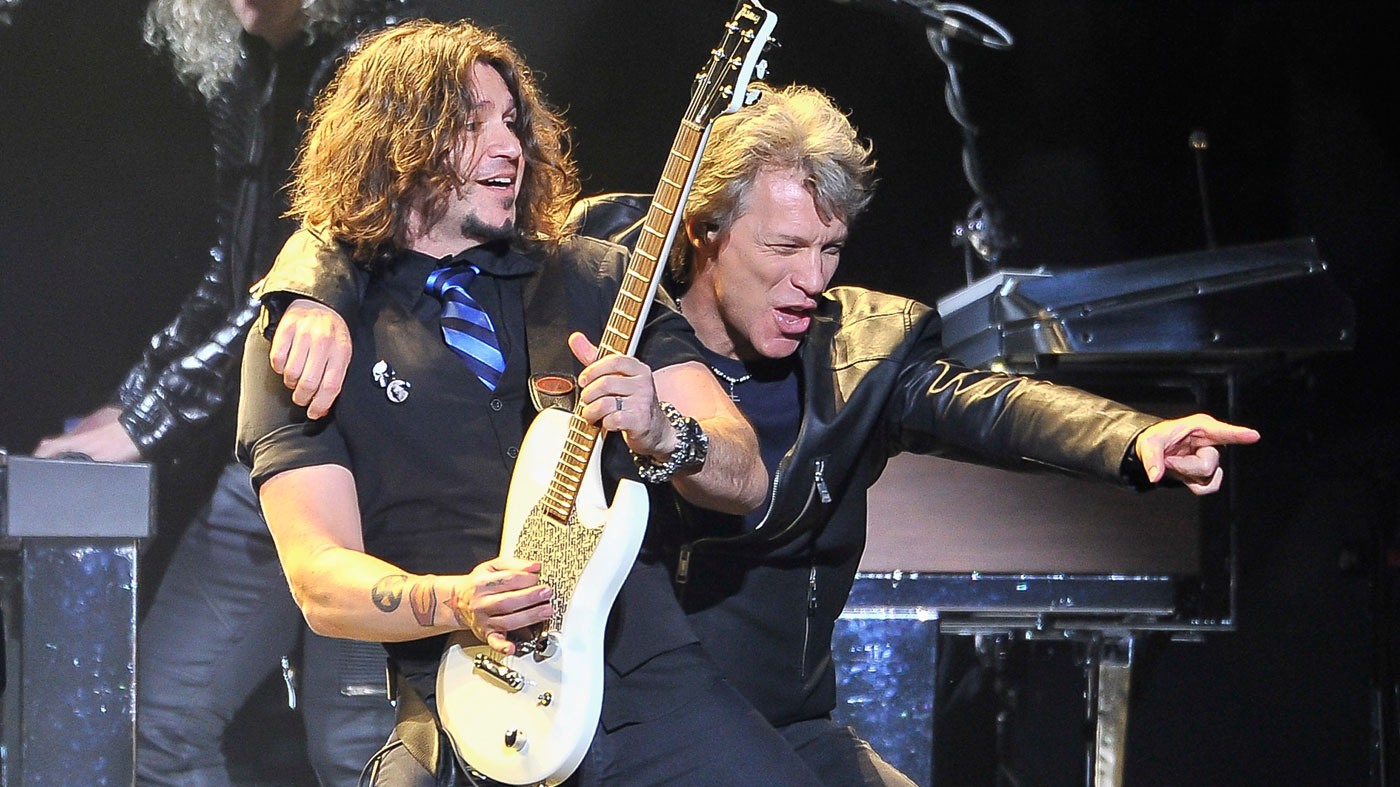
Joining 'Jovi
Tell us about the Bon Jovi gig - how has that all unfolded?
“Yes, it’s been on and off since 2011. John Shanks had been producing the last few Bon Jovi records, and so Jon Bon Jovi called John Shanks and said he needed a ‘just-in-case guy’. I guess there were a couple of incidences when Richie wasn’t in good shape to go and perform. So, he said, ‘I need a guy. I can’t be in that position again. I’ve got to be ready to rock.’
“Jon has this mentality that the show must go on, but the mentality also goes with, ‘I’ve got 150 people working for me out here. I can’t call and tell them I’m not doing any shows because our guitar player isn’t around. You know what I mean?’ And the fans. I mean, I learned early on that fans go to multiple shows. They go to 30, 40 shows, and that’s a lot of plane tickets and hotel rooms that you’ve got to try and get your money back if shows get cancelled. There’s a lot involved.
Jon Bon Jovi called, and he said, ‘Hey. We need you’. And I was, like, ‘Oh, s***, it’s going down’.
“John Shanks said, ‘I’ve been watching this guy on YouTube. He’s ridiculous. He can play and sing anything, and he seems like a really cool guy. You should probably just get him.’ And it was me.
“I know it’s funny too, because I remember meeting John Shanks and him coming up to me going, ‘Man, I love watching your videos. I watched five hours last night.’ And then two weeks later, he called me and said, ‘Hey, I got a gig for you, but I can’t tell you what it is. You’ve got to come into my studio tomorrow and we’ll talk about it.’
“Then, a contract and a statement of confidentiality were put in place, and I’m just talking to lawyers and managers while I’m learning a show as the ‘just-in-case guy’. I might get the call, I might not get the call. Then on 14 April 2011, Jon Bon Jovi called, and he said, ‘Hey, it’s Jon Bon Jovi. We need you.’ And I was, like, ‘Oh, shit, it’s going down.’”
What he like to work with?
“He’s great. He really is, but at the same time I kind of get a different Jon Bon Jovi than anybody else. Because they initially put me on hold from May of 2011, and then I had to go out and do it because Richie went into rehab. So, every day, Jon, the band, the immediate posse, the exterior posse, every day somebody came up to me and said, ‘Oh, man, thanks so much for doing this.’
“So, the Jon I got was the grateful ‘Thank you for saving the day every day.’ You know what I mean? He was that guy to me and he asked ‘How are you doing?’ He was always very courteous. Like, ‘How are you feeling?’ I’d go, ‘I think I’m finally comfortable.’ ‘Great. Learn these five songs’. And I’m, like, ‘Wait! I just said I got comfortable.’ So, I didn’t get comfortable the entire run of 13 shows [laughs].”
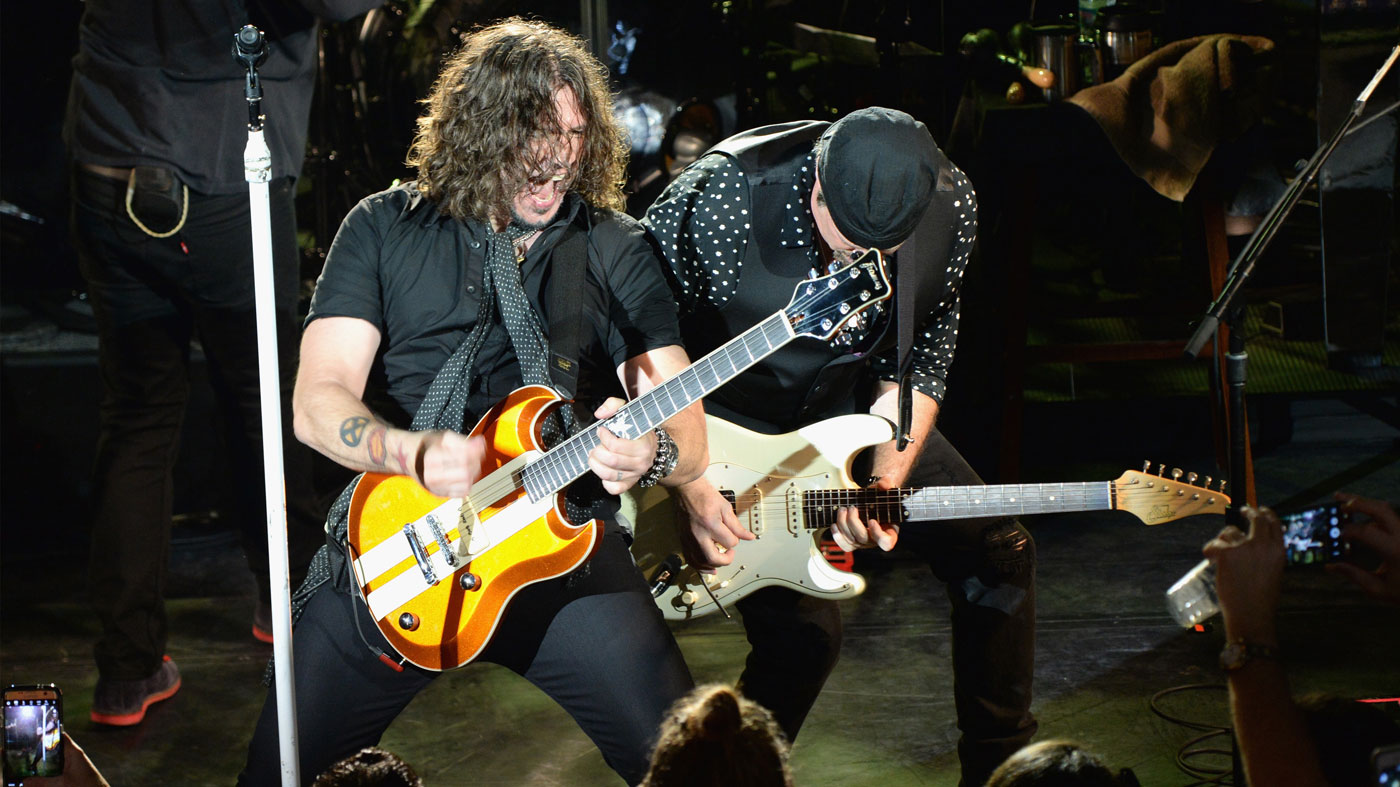
Serious setlist
How many songs were on the setlist?
“I went out initially knowing 25, and then it was 30, and maybe 35, but in 2013, when we went to Europe, they’d do three-and-a-half-hour shows, so I had to learn another ten, 20 songs. It is intense. I had notes because the last thing you want is, you learn two new songs and then Wanted Dead Or Alive sneaks out the other end of your brain, you know? You have a brain fart when you’re playing 12-string. You don’t want that.”
Did you use any cheat sheets?
You don’t want to be the guy holding everything up. So, I learned really quick how to chart a song
“Well, a guy called Takumi was my tech at the time and he was awesome. I’d come in at soundcheck and I’d have [song] charts with me. And you know, on tour, they have everything, so they have a laminating machine - so he would laminate my charts. Then when we changed guitars, he’d pick up one chart, put the other one down. And I’m, like, ‘Oh, this guy’s amazing’. You know, he was really awesome.
“So, yes. I mean, you don’t want to rely on charts in a situation like that, but it certainly helped. You want to wean off the chart. Even in front of 20,000 people, you’re, like, ‘I don’t think I’ll look at the chart tonight’, and then you’re, like, ‘Shit, is it the solo coming up or a bridge?’ Then you look down and see, ‘Okay, it’s a bridge’.
“I can read a chart. I can make a chart. I can read my own thing. I have this thing called ‘syncopation by association’. I’d do a lot of sessions in LA, and what would happen was, you’re in the room with either Kenny Aronoff, or Abe Laboriel Jr, and whoever the hot-shot bass player is, you know, Chris Chaney, Paul Bushnell. Everybody’s in there ready to lay down a track for a big label, big artist, and you’re in there, and you don’t want to be the guy holding everything up. So, I learned really quick how to chart a song, like, the first or second listen-through.
“A chord chart is easy, but, ‘Hey, at the end of the eighth bar, coming out of the first chorus, we want everybody to go… [Taps out music] right?’ And I’m, like, ‘Okay’. But I’m thinking, ‘How can I remember that?’ So, I’d write, ‘Come on, come on, come on, come on, boo-lah’, or something like that. Or, ‘Still of the night, still of the night, still of… burst’. You know what I mean? So, I would always write down rhythmical words to remind me of what I had to play when I got to it.”
Do you still practise much?
“I wouldn’t say ‘practise’ as such. I do a lot of writing, especially if I’m in writing mode for my band, The Drills. But when I pick up a guitar, I always try to conquer something that I can’t do. Even when I was young, I was 18 and I just advanced like crazy, because I have this thing called ‘Conquer The Lick’, where I’d come up with something stupid and impossible, and I wouldn’t put the guitar down until I nailed it, like, mastered it. Sometimes, it took 45 minutes, and sometimes it took six hours. So I always had a guitar in my hands.
“But I still constantly challenge myself. I do this at clinics. Like, I haven’t tapped in forever, because that’s not what I do now. But I wanted to take the famous tapping part from Eruption by Eddie Van Halen, and pick it. So, I found triads that worked, and I would pick it over two strings, and there was one fingering. The first two I could get, but the third I couldn’t.
“So, it was really funny. You’re sitting there going, ‘Come on, Philly. You can play fucking anything’. What do you do? I made it, like, ‘Okay, well, relax. Take the guitar and just play that phrase for two hours at 70 beats per minute, and master it’. Own the lick, don’t let the lick own you. So, when people go, ‘Wow, you actually couldn’t play something, and instead of cheating it, you kicked its ass.’ And I’m, like, ‘Yes, that’s what being a musician’s all about, right?’”
Phil's Framuses
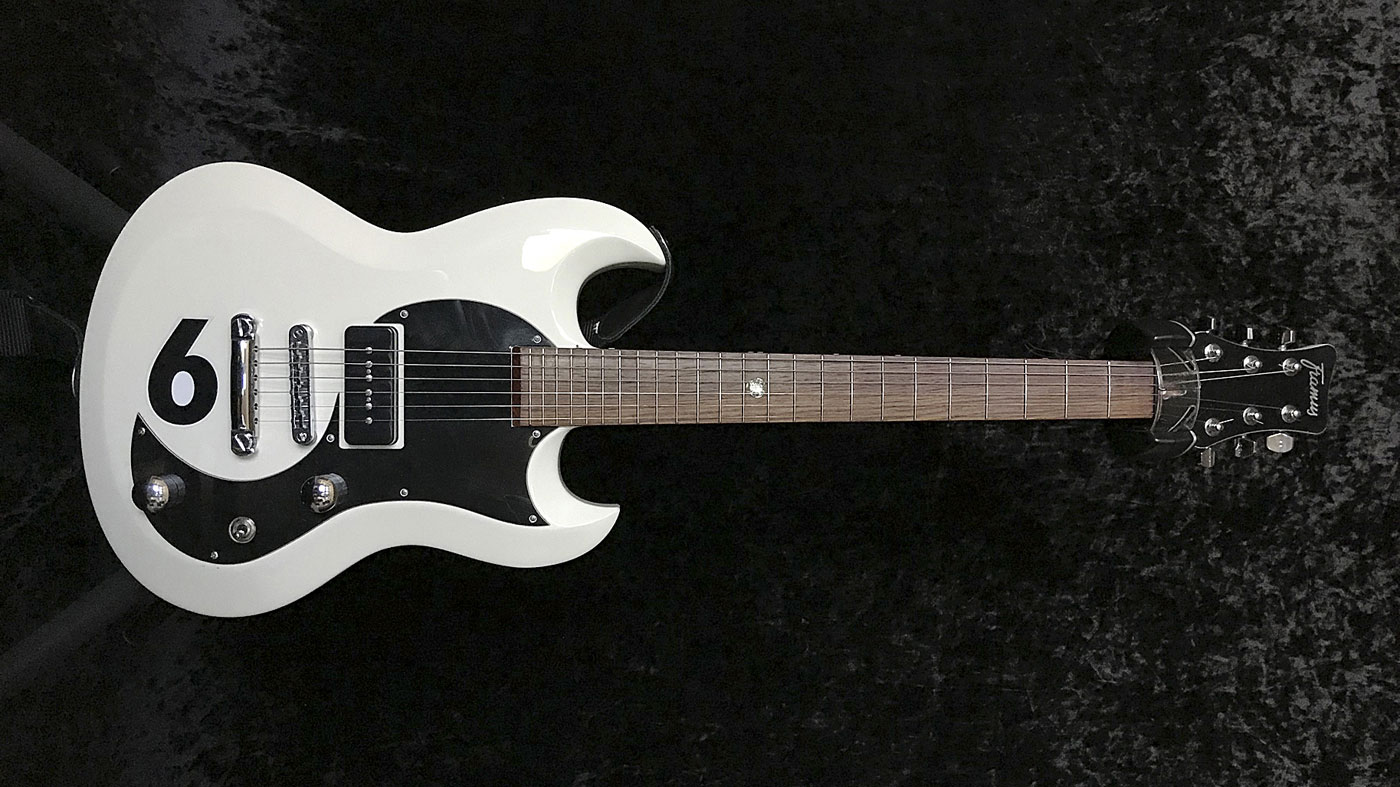
Black and white wonder
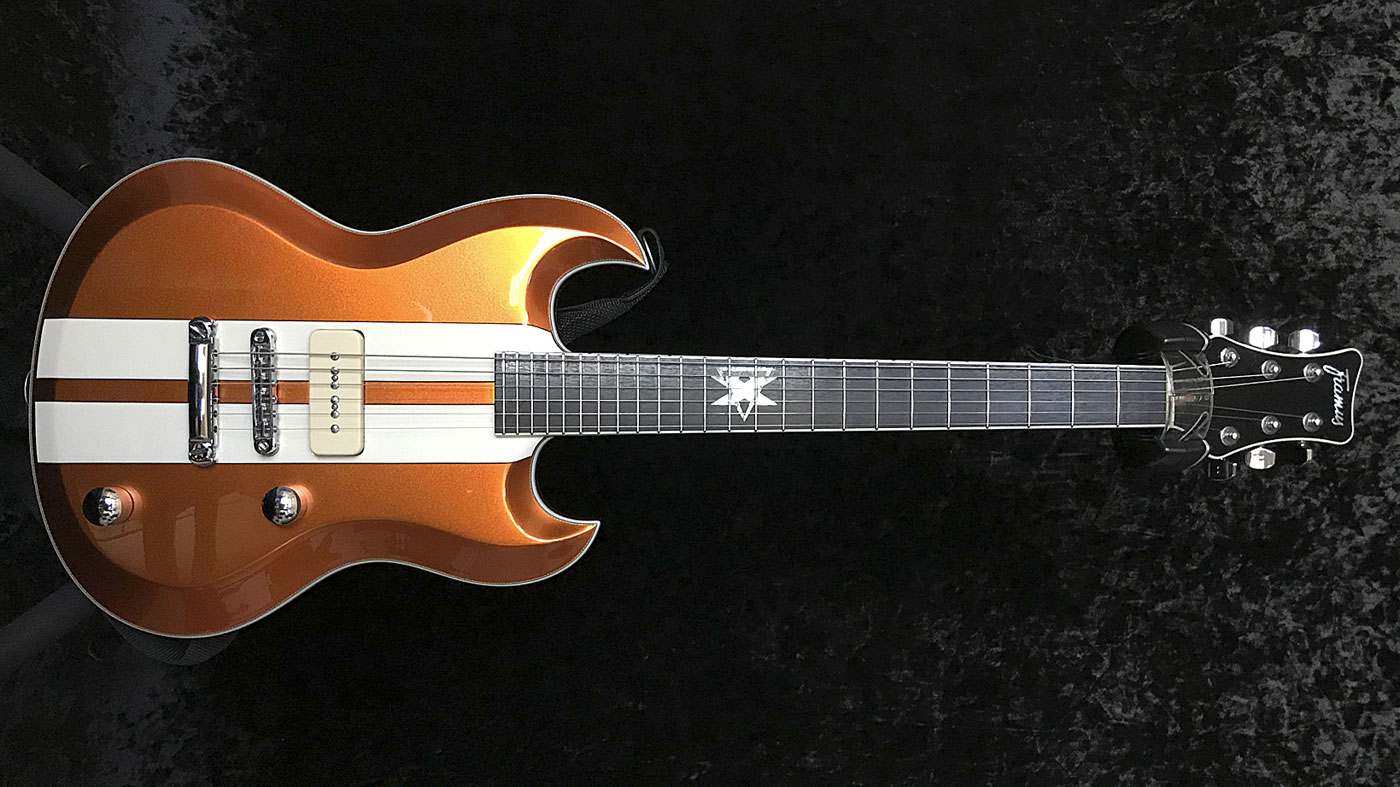
Racing stripes
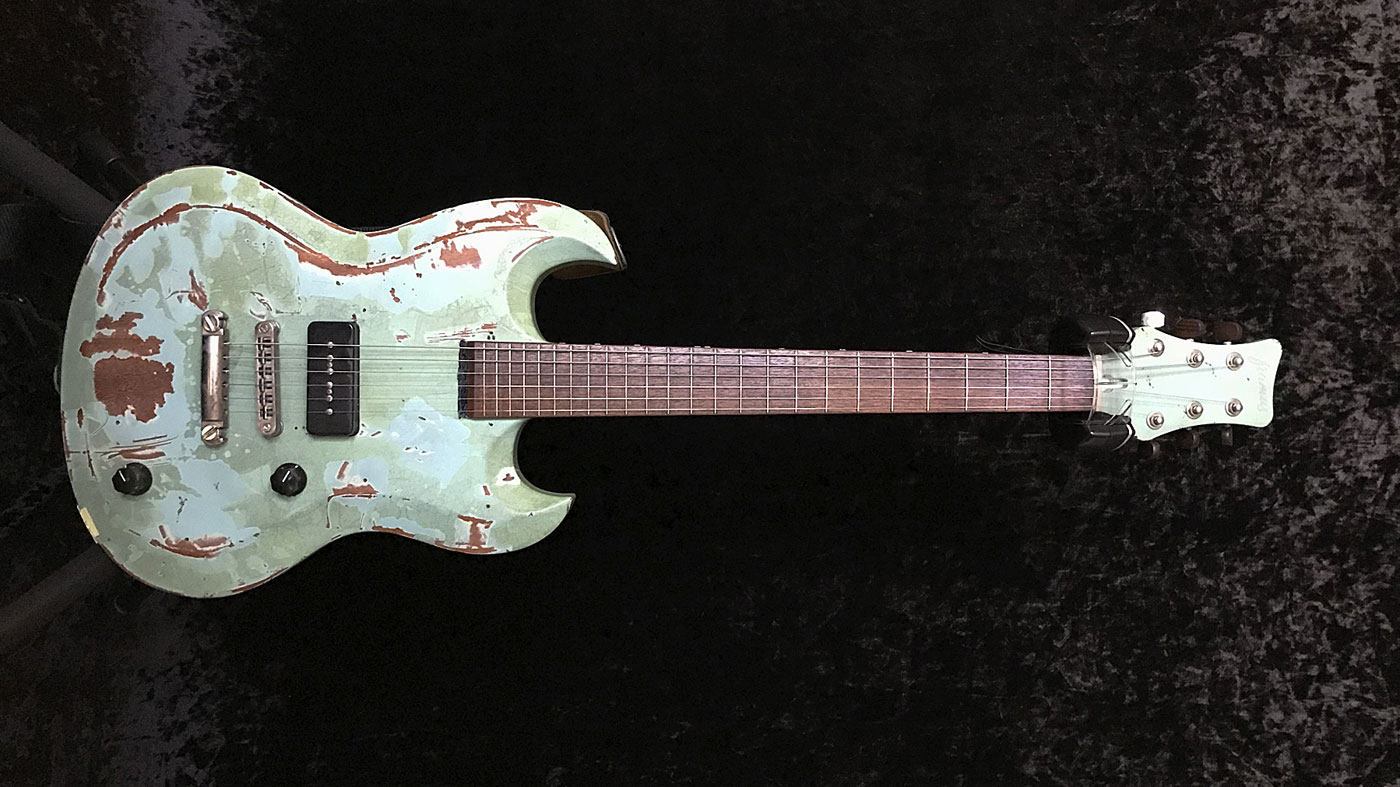
Distressed doublecut
Jamie Dickson is Editor-in-Chief of Guitarist magazine, Britain's best-selling and longest-running monthly for guitar players. He started his career at the Daily Telegraph in London, where his first assignment was interviewing blue-eyed soul legend Robert Palmer, going on to become a full-time author on music, writing for benchmark references such as 1001 Albums You Must Hear Before You Die and Dorling Kindersley's How To Play Guitar Step By Step. He joined Guitarist in 2011 and since then it has been his privilege to interview everyone from B.B. King to St. Vincent for Guitarist's readers, while sharing insights into scores of historic guitars, from Rory Gallagher's '61 Strat to the first Martin D-28 ever made.












